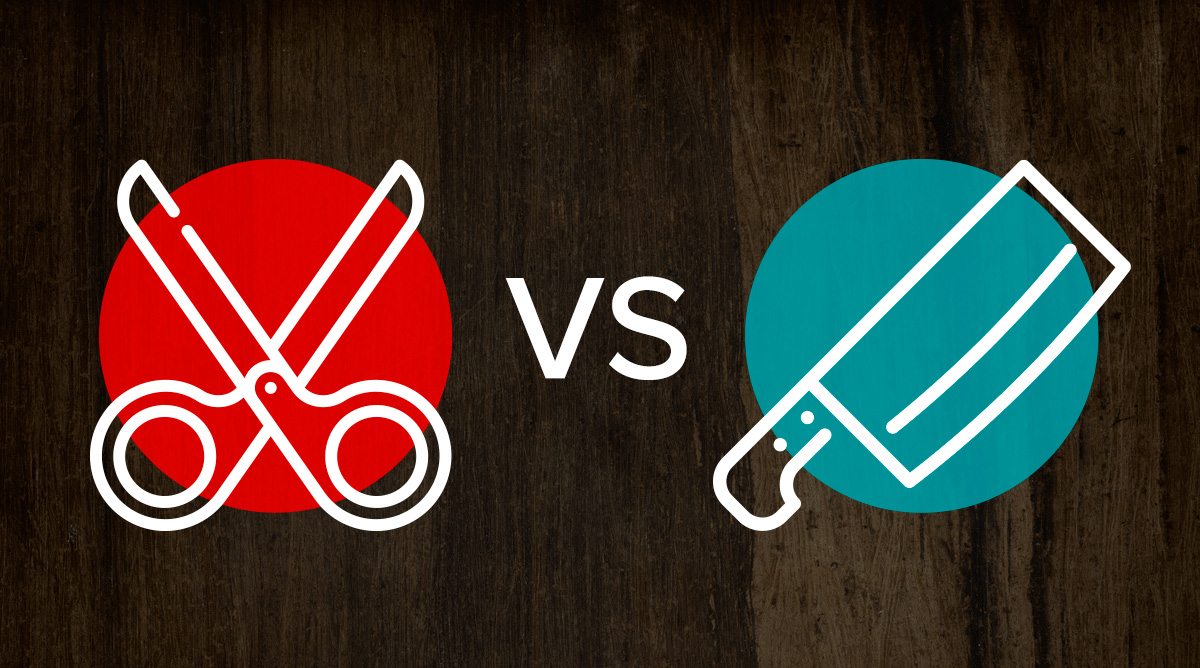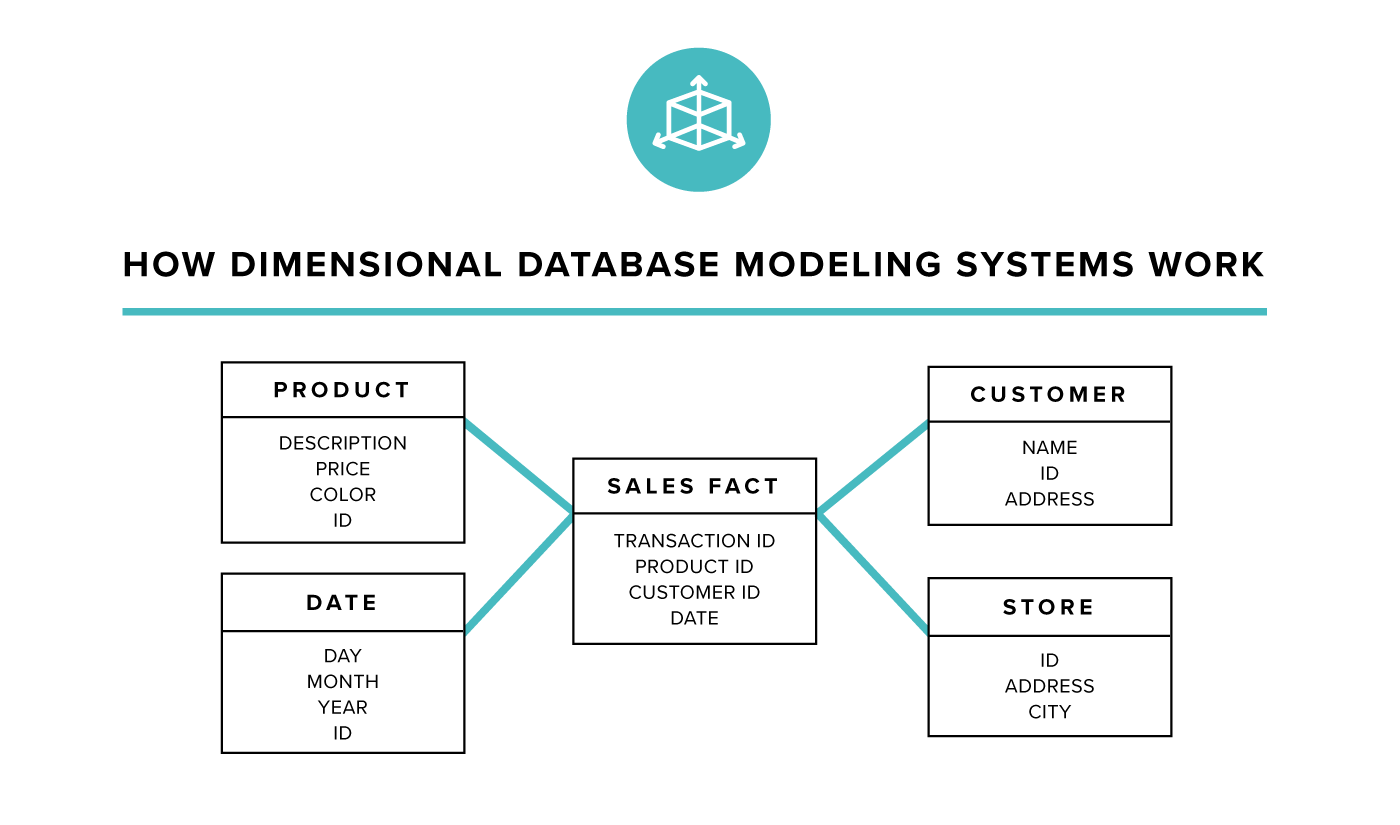
7 min read
Dimensional and relational database modeling systems: The right tool for the job
Dimensional and relational database modeling systems: The right tool for the job
Don’t let the technical jargon intimidate you, understanding the difference between dimensional and relational database modeling systems is actually quite simple.
We can all agree that a pair of scissors and a knife both fall into the category of cutting tools, but you wouldn’t typically choose a knife to cut a paper snowflake and you wouldn’t use scissors to slice a watermelon. Although they perform similar functions, they do so in unique ways that are optimized for different situations, each tool outshining the other when assigned to the appropriate job.
The same can be said for relational database management systems (or RDBMS) versus dimensional database modeling systems (or OLAP systems – online analytical processing systems).
Dimensional and relational database modeling systems both do the job of storing and organizing your data, and both are designed with efficiency and performance in mind. But there are fundamental and practical reasons why we would structure your data using one over the other, and it has everything to do with how your data is going to be collected and used.
Two different approaches to organizing your business information
Dimensional and relational database modeling systems organize business information using two different approaches. In a nutshell, relational database modeling systems are your best option for capturing data, while dimensional database modeling systems are your best friend when it comes to reporting, business intelligence, and analytics.
Doug Wilson, one of our Solution Architects at Praxent, put it best: “Relational database models are optimized for getting your data in, while dimensional database models are optimized for getting your information out.”
We’ll give you a closer look at dimensional and relational database modeling systems using some examples so that you’ll be able to see for yourself that they are in fact vastly different approaches for organizing your business information, making one much more suitable over the other depending on your custom software development needs.
Relational database modeling systems: Ideal for capturing data
If you need an accurate and efficient way to capture your business data, such as transactions, you’ll want a relational database modeling system to do the job. The reason? RDBMS’s are structured to give you the best performance when it comes to capturing accurate, real-world information about your business.

Using a hierarchical or “nesting” structure, RDBMS’s are really good at something called “database normalization,” which is a technique used for representing your business data in a realistic way that also minimizes errors and duplication of information.
Here’s an example of RDBMS structure and why it’s referred to as relational: In a relational database, each type of information, such as a customer name, is stored in one unique location called a “table.” In this example we’ll refer to your customer name table.
Your customer’s name is stored on one line or “row” of the customer name table. All other information related to this customer, such as dates of sale, products purchased, etc, will be listed in their own tables and will be linked or related to their name within the customer name table, so that your customer’s name is only being stored in one location within your database, rather than being entered each time new information is added for that customer.
This relation of tables with one another is a key feature of relational database structure because it prevents the replication of information in the data capture process. This is vital to the performance of your software.
Because the information is entered only once, it only needs to be updated or retrieved from one location whenever a change is made. This ensures that your business software runs as quickly and smoothly as possible. That’s what makes relational database modeling systems ideal for your data capture needs.
Dimensional database modeling systems: the solution for reports, BI and analytics
Dimensional database models, on the other hand, are much better suited when the primary goal for your custom business software is to extract your data in the most versatile and efficient way possible.
Dimensional databases are structured to give you the most flexibility with regards to how you can view your data, and they maximize how quickly you can retrieve it. By generating reports, business intelligence tools, and analytics, dimensional databases answer the important what, how, and why questions of your business.
What makes this type of database dimensional is a feature that differs quite a bit from relational databases. In a dimensional database, rather than storing each fact or piece of information only one time, every aspect or dimension of that piece of information is entered in as many ways as possible. This is the key feature of dimensional database models that gives you flexibility in your data retrieval process to generate the most intelligent business answers possible.

For example, when a date is entered for a product sale, rather than that date going into a single row of a “date” table, every aspect of that date (such as day, month, year, quarter, day of the week, etc) is entered separately. This may seem redundant and inefficient, but it is quite the opposite when it comes to pulling the information you need.
Here’s why: Let’s say you’re running a sales report by timeframe and you select a particular time range to look at. If dates/times were only stored in one way (like in a relational database), for example month/day/year, then you wouldn’t have the ability to pull a sales report showing only sales on Wednesdays, or for the first quarter. Those dimensions of time would not be present in your database.
In this situation, a relational database limits how you can view your sales data. Retrieving sales information in an effective and efficient manner is much more cumbersome using a relational database than it is using a dimensional one. With a dimensional database, on the other hand, we can customize the software to account for the unique ways in which you need to view your reporting, business intelligence, and analytics data.
Dimensional and relational database modeling systems: Which one is the best fit for your business?
As you can now see, the underlying tools for dimensional and relational database modeling systems are foundationally very similar, in that they both consist of tables of information; however, there are clear structural differences that have vital implications on how your data can be used. Developing the most relevant and efficient database modeling system is crucial to meeting your specific business software needs.
Learn more
If your company is struggling to manage data, you could be reaching an opportune turning point in the life of your business, and not even realize it. Talk to one of our Solution Architects to discover if now is the time to upgrade your technology. We’ll walk you through the steps of discovering the most effective way to collect, store, and retrieve your business’ data.


Hi, Nice article.I work as a senior consultant in capgemini.
I am trying to understand , why sales data view is restricted in relational db. Can’t i use a reference metadata table (including info on quarter, week days) ,when records are to be filtered on attributes currently not captured.
Thank you, Ganesh. I’m glad you enjoyed it.
I hope that I’m understanding your question correctly, but I can think of a number of business as well as technical reasons why access to sales data might be restricted in an organization. I’d have to know more about your particular situation in order to help diagnose the specific issue you’re encountering.
Augmenting the available sales data with a related table of additional attributes could certainly help with filtering even in a relational data structure, but the advantage of a dimensional data structure for reporting, business intelligence, and analytics is primarily speed/performance. By flattening out the data and pre-computing aggregated values, e.g. daily, weekly, monthly, and annual sales figures, a dimensional structure can much more quickly provide the answers that business users need while putting far less load on the system.
In other words, it’s not that a properly designed relational system can’t provide many of same answers that a properly designed dimensional system can. It’s just that the dimensional system can do it much more quickly and efficiently because its structure is optimized for retrieval and analysis rather than capture, validation, and storage.
I hope that I’ve understood your question and that you find my answer helpful.
Best regards,
Doug Wilson, Solution Architect
Praxent